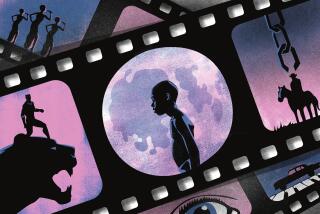Storm Sets Off Writerly Race
- Share via
Martin Dugard was fishing around for his next book idea last December when he read a newspaper account of the tragic Sydney-to-Hobart Yacht Race. A hurricane had hit the Bass Strait and six sailors died in one of the worst sailing race disasters in history.
Dugard, 38, a Rancho Santa Margarita writer who had chronicled the notorious Raid Gauloises endurance race in a 1998 book, “Surviving the Toughest Race on Earth,” was intrigued. Less than a month after the accident, he found himself speeding to Australia to chronicle the story for a book.
With his completed manuscript due to the publisher by the end of April, there was no time to waste.
The reason for the quick turnaround? Intense competition in the red-hot genre of adventure books.
Dugard’s “Knockdown: The Harrowing True Account of a Yacht Race Turned Deadly” (Pocket Books; $24.95), which focuses on the voyages of three of the ill-fated crews, is the second book to be published about the horror that befell the yacht race on Dec. 28.
First across the finish line was Australian sailing journalist Bob Mundle’s “Fatal Storm” (McGraw-Hill), which hit bookstores in July.
Freelance writer and author Kim Leighton’s “A Hard Chance” (Willow Creek Press) arrived in bookstores in early October, a month after Dugard’s book. Two more are on the horizon, including an untitled book by Wall Street Journal reporter Bruce Knecht from Little, Brown in the fall of 2001 and a book by Debbie Whitmore, an investigative journalist for the Australian Broadcasting Corp.
The flurry of Sydney-to-Hobart race tomes reflect readers’ appetites for disaster-adventure books and publishers’ increasingly competitive quest to dish them up.
It’s a publishing trend fanned to white heat by the 1997 successes of “Into Thin Air,” John Krakauer’s firsthand account of a Mt. Everest expedition that killed eight climbers, and “The Perfect Storm,” Sebastian Junger’s account of the lives and deaths of six fishermen who went down with their boat during a storm off the coast of Nova Scotia.
“The adventure narrative has become its own subgenre in publishing now,” said Jason Kaufman, a senior editor at Pocket Books who edited Dugard’s book.
After learning that Mundle’s “Fatal Storm” from McGraw-Hill would beat “Knockdown” to bookstores, Pocket Books tried an unusual tactic: It released “Knockdown” electronically on July 19, six weeks before the hardcover edition would be available.
Consumers could purchase “Knockdown” through Rocket eBooks or Softbook and read it on a hand-held unit, or go to a bookstore and have it printed on demand in a trade paperback version complete with color jacket.
“As far as I know it was the first time a book was available electronically before it was available in print,” Kaufman said. “It did well, and we got a lot of attention.”
In Dugard’s telling of the disaster, he chose to tackle the personal stories of three different crews. “My goal was to put the reader on the deck with the sailors,” he said.
The three boats: the Midnight Rambler, a 35-footer that won the handicap honors; the Winston Churchill, an elegant wooden yacht that had sailed in the first Sydney-to-Hobart race in 1945; and the Sword of Orion, a speedy new 43-footer. The Churchill and Orion both sank.
The 735-mile Sydney-to-Hobart course, which runs down Australia’s east coast to the island of Tasmania, is one of the most treacherous blue-water courses in the world. It passes through the notorious Bass Strait: a 200-mile stretch of sea known for its unpredictable combination of winds, waves, currents and freak weather.
Sailors who have navigated the Bass Strait call it “the Hell on High Water.”
Twenty-four hours after the start of the 54th annual race--as the leaders were halfway through the strait--a “weather bomb” dropped on the fleet of 115 boats. From out of nowhere came a force-3 hurricane, its winds blowing more than 100 miles an hour and waves soaring from 45 to 100 feet.
Forty-three boats turned back, seeking shelter along the southeastern corner of Australia. Twenty-four others were lost or left at sea.
And in what became the largest such operation in Australian history--involving 30 vessels and 40 aircraft--55 sailors were rescued. Many suffered broken arms, ribs and head wounds caused when they bounced off hard surfaces as huge waves upended their boats.
Miraculously, 48 boats finished the race.
Dugard spent a week in Australia interviewing two dozen race participants, including six who had been trapped in rolled or overturned boats. In the meantime, he said, “I picked up every single Australian newspaper and magazine--anything that related to the story.”
What began with his original newspaper clipping is now a huge trunk of documents on everything from the composition of boats, the history of the race, the wind systems off Australia and audiotapes from the coroner’s inquiry of sailors talking about their experiences.
A week after returning home to Orange County, Dugard flew to England, where he spent a week interviewing the family of 33-year-old Glyn Charles, a top British sailor who perished in the Bass Strait.
In early March, with his April 30 deadline looming, Dugard finally sat down and began to write. “I pretty much locked the doors and worked from dawn to dusk.” And he made his deadline--with a week to spare.
Dugard has concluded that the Sydney-to-Hobart Yacht Race tragedy was preventable.
“I think there was an incredible amount of hubris going on there,” he said. The Australian Bureau of Meteorology didn’t radio the fleet to warn them of the storm, then organizers refused to cancel the race and “there were sailors who, when they knew the storm was going to hit, willingly went into the storm.”
Why 48 boats continued with the race, Dugard said, “goes back to the Australian mentality.
“As a nation, they’re a very seafaring people. The Sydney-to-Hobart [race] is a huge event over there. The start is broadcast on television. It’s almost a mini-version of the Super Bowl. For someone to win the race is huge, so a lot of the guys were motivated by that--to soldier on and win the thing.
“One of the sailors told me, even at the worst part of the storm, he didn’t want to turn around. In the back of his mind, he kept thinking what incredible bragging rights he’d have to be able to tell people he finished the worst Sydney-to-Hobart in history. It was almost like a rite of passage.”
*
Dennis McLellan can be reached by e-mail at [email protected].
More to Read
Sign up for our Book Club newsletter
Get the latest news, events and more from the Los Angeles Times Book Club, and help us get L.A. reading and talking.
You may occasionally receive promotional content from the Los Angeles Times.






